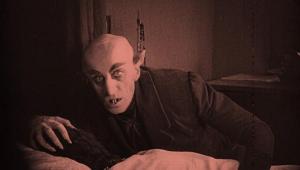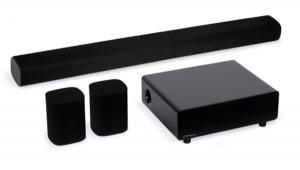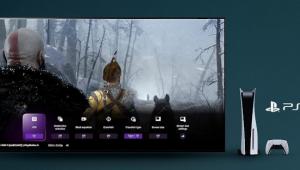Pioneer PDP-501MX 50" plasma monitor Page 2
Pioneer also claims that each cell in the display is offset a bit, slanted sideways about 22 degrees. This is said to mitigate the "screen-door" effect—all those square cells giving the faceplate a screen-like imprint. I didn't have the opportunity to look at the Pioneer side-by-side with another plasma display, but the screen-door effect did seem minimized.
First impressions
Before beginning any sort of systematic evaluation, I just watched the PDP-501MX for a while, using the over-the-air high-definition signal coming from WETA, the PBS station here in Washington, DC. Since early November, WETA has been airing about 45 minutes of 1920x1080i HDTV programming: an endless loop of sample tape from several of the station's recent high-definition trials. The production values are quite high; WETA has been an HDTV model station for some time and clearly knows how to handle the format.
I'm using a Sony VPH-1292Q projector as a reference monitor (also evaluated in the June 1999 issue), and WETA's signal looks absolutely wonderful on it. The picture is positively transporting—bright, clear, almost real. The same material on the Pioneer looks very, very good as well. I also watched a W-VHS movie, Desperado, taped in the Japanese high-definition format known as Muse. It looked pretty good, though the color contrasts seemed too strident. Working with a tape, however, it's hard to know whose fault that is.
Still, with all the high-definition material, the sharpness and clarity on the Pioneer are several notches below the image from the Sony projector. None of it rises above that threshold beyond which high-definition images appear to be real. Of course, that shouldn't be surprising. The Sony projector displays the equivalent of just over 2 million pixels, while the Pioneer displays just under 1 million. In addition, the Pioneer must downconvert the over-the-air signal to 1280x768. And any downconversion process will introduce picture degradations.
Digging deeper
On closer examination, the first Pioneer sample exhibited other problems, which showed up as soon as I began a systematic evaluation by playing the Video Essentials DVD through the S-video input. Looking at the PLUGE pattern, which is largely a solid-gray page used to set gray scale, I saw that the picture positively swarmed with video noise. It was unusual noise—random but discrete—and up close, it looked as if thousands of tiny gnats were flying around just behind the glass. In addition, the picture seemed to be divided into five or six discrete horizontal segments or stripes, each with a slightly different level of brightness and intensity of video noise.
Some of these problems are not unique to the Pioneer plasma. The generally excellent Runco plasma display reviewed in the February 1999 issue also exhibits this brightness-zone problem, which appears to be a liability of some plasma monitors.
A few test patterns later the Video Essentials DVD displayed a grid-geometry pattern, which revealed another problem. Each of the vertical white lines had a twin—a "ghost" half an inch to the right—that was not simply a faint echo. These were bold lines, almost half as wide and half as bright as the originals. Horizontal lines had no such echoes, and diagonal lines exhibited a less extreme version of the problem. But the echo lines and flying-gnat noise combined to create a rather distressing picture. Nothing I did was able to correct these problems.
Jamie Wilson, an Imaging Science Foundation technician who works for Overture Audio/Video in Delaware, came by to calibrate the set. He had his own take on the problem: "Maybe this is just a bit of high-frequency blooming," he suggested. "Maybe turning the sharpness down will fix the line echoes." But when he tried it, things only got worse. Turning the sharpness control all the way down increased the number of vertical echo lines to three; turning it all the way up caused two echo lines to accompany each intended vertical line.
Other problems
During calibration, Wilson and I found some other problems. It's not unusual for a television's color decoder to overplay red when everything else is set just right. This was true on this set, too. With the color balance set correctly, the reds and related colors glowed. By turning the color control down, we got the reds to balance properly. Again, this is a problem common to many sets of all types.
But this is also an HDTV, and the red issue caused a corollary problem: When we switched over to the high-definition signal coming in on another input, it was almost black and white. With the color control turned down, almost all color information was gone. The NTSC settings were absolutely inappropriate for high-definition. This might be a temporary anomaly of the new digital age; I have encountered it in more than one HDTV.
- Log in or register to post comments




















































